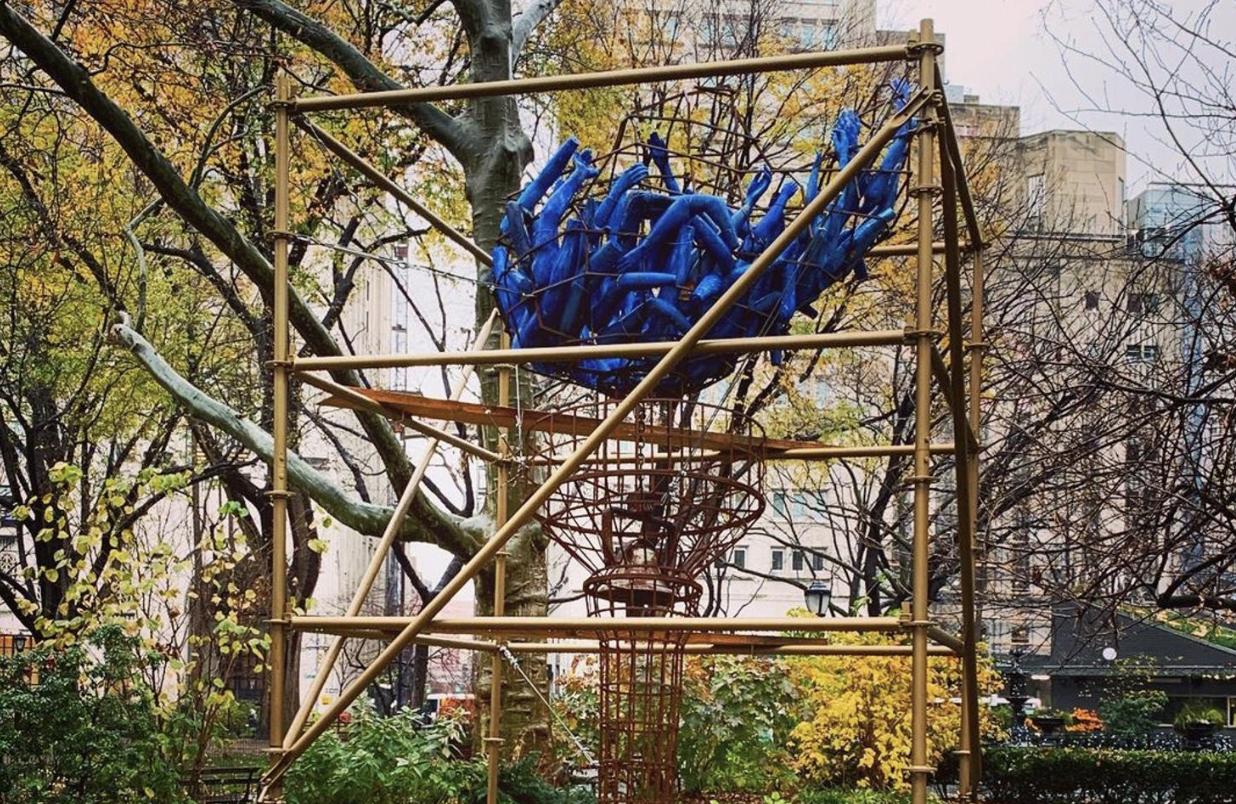Overview
Students will prepare for upcoming art-making lessons using close-looking, speaking, writing, and/or sketchbook prompts.
Materials and Tools
- Pencil
- Sketchbook or one to two pieces of paper
Activities
Note: The following activities are written with sample language you may use with your students. Following the art-making lesson, you may choose as many reflection activities as desired for students to work on in class or independently.
Step 1: Introduction and Close Looking: Statue of Liberty and Light of Freedom (15 minutes)
In this lesson, we will look at different ways that artists use bases and pedestals to create meaning in a sculpture or monument. You will sketch ideas for a pedestal or base for your monument.
Note to Teachers: Before teaching with a work of art, spend some time looking closely at it on your own. Familiarizing yourself with the artwork will prepare you to guide the close looking activity.
If your students are new to looking at art together, you can introduce the activity to students in the following way:
Today we are going to spend some time looking at and discussing a work of art together. When we look at art, there are no right or wrong answers. I’m going to ask you to look closely, share your ideas about what you see, and listen respectfully to each other’s ideas. Everyone’s ideas are important. We all see things differently, and when we look at art, we can learn to see through each other’s eyes.
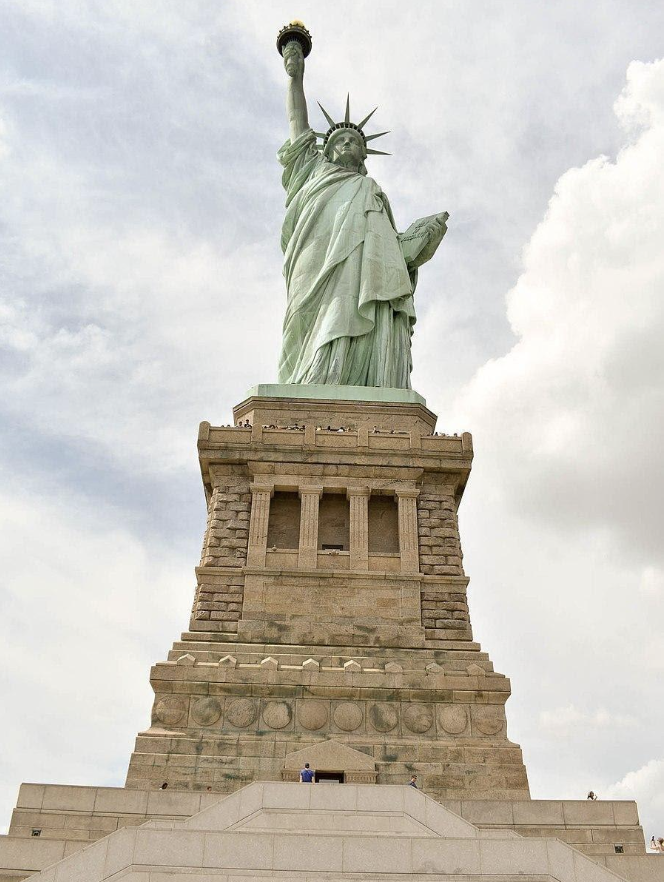
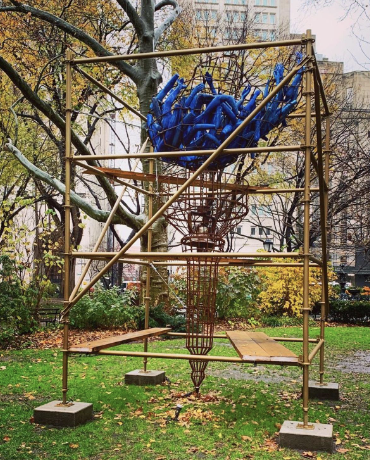
Look closely at these images of the Statue of Liberty and Abigail DeVille’s sculpture Light of Freedom.
- What does DeVille’s sculpture have in common with the Statue of Liberty? How is it different?
The Statue of Liberty represents the traditional purpose of a pedestal: to raise a sculpture up high.
- How does Light of Freedom break with that tradition?
Light of Freedom was inspired by the words of the abolitionist leader Frederick Douglass who said, “If there is no struggle there is no progress.”
- What do you see in the sculpture that shows struggle?
- What do you see that makes you think of progress?
Step 2: Close Looking and Writing: Do Ho Suh (10 minutes)
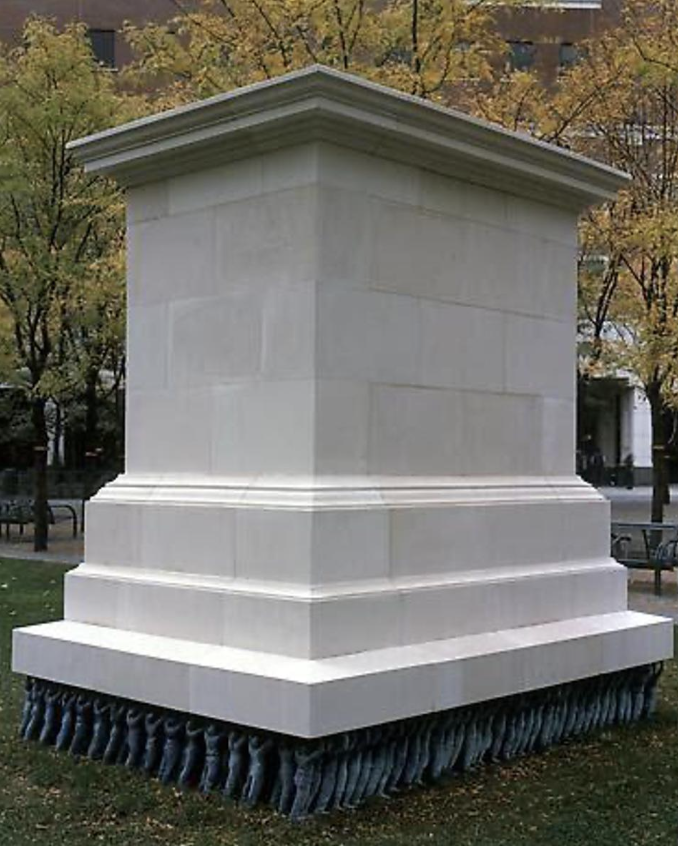
Do Ho Suh is another artist who played with the idea of the pedestal. Look closely at Do Ho Suh’s piece Public Figures and write down your responses to the following questions:
- How did Do Ho Suh transform the traditional pedestal?
- What do you think this monument might commemorate? What do you see that makes you think that?
Step 3: Sketchbook Activity (15 minutes)
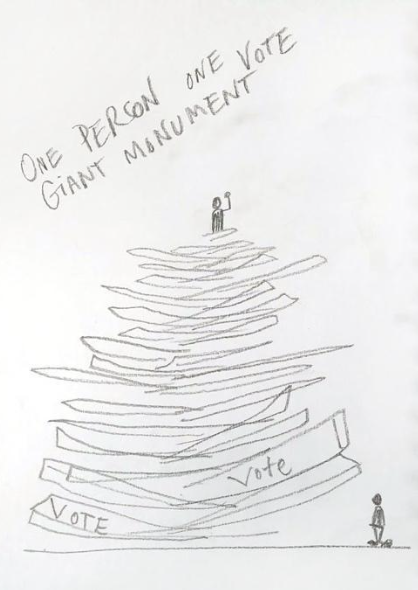
Look at the sketchbook image on Slide #6 that shows an idea for a monument to voters. The pedestal represents a large pile of paper ballots.
Imagine you could build a monument of any size with any material, with the help of architects and craftspeople. Revisit your sketchbook ideas for your monument.
- Will you choose to use a pedestal? Why or why not?
- If yes, what form would your pedestal take? Why would you choose that form?
Sketch several ideas for a base or pedestal.
After giving students time to sketch, invite them to share.
- Which of your ideas for a base or pedestal do you think is best to represent your monument idea? Why?
Resources
Abigail DeVille on Light of Freedom Art21 video:
Learn more about Abigail DeVille’s sculpture
More about Doh Ho Suh:
https://www.publicartfund.org/exhibitions/view/beyond-the-monument/
https://www.lehmannmaupin.com/artists/do-ho-suh

